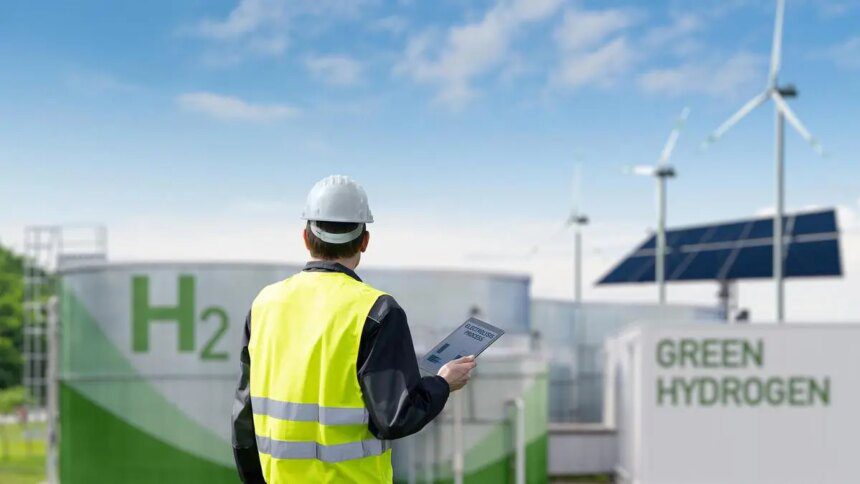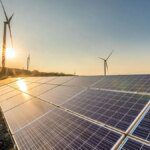Earlier this month, the International Energy Agency (IEA) released its annual report on hydrogen, titled the Global Hydrogen Review 2025. While the document is phrased in diplomatic language, it underscores a troubling reality: the global green hydrogen narrative is faltering.
A notable data point from the report highlights this struggle. The 2024 version projected that by 2030, global production of low-emissions hydrogen would reach 49 million tonnes (mt). However, the 2025 update revises this expectation down to 37 mt, citing “cancellations and delays.” This trend is mirrored in several reported high-profile project cancellations, including efforts by Thyssenkrupp Nucera, Statkraft, BP, Fortescue, and Nestle.
Currently, global hydrogen consumption stands at 100 mt annually, requiring 260 billion cubic meters of natural gas and 90 mt of coal for production. Notably, low-emission hydrogen accounts for just 1% of this total. The 2025 IEA report states that the capacity of low-emission hydrogen projects, which reached a final investment decision (FID), increased five-fold in 2024 to 4.2 million tonnes per annum (mtpa), representing just 4% of projected global hydrogen consumption by 2030. This suggests that the IEA anticipates minimal growth in total hydrogen consumption, as a mere 4.2 mt indicates about 4% of the current 100 mt usage. Furthermore, of the 37 mtpa announced projects, only 4.2 mtpa (11.3%) reached FID.
The disparity between declining ambitions and actual outcomes can predominantly be attributed to cost issues. The IEA report asserts, “The cost gap between low-emissions hydrogen and unabated fossil-based production remains a key barrier for project development.” It notes that a significant decline in natural gas prices from 2022-23, coupled with rising costs for electrolysers due to inflation and slower-than-expected technological deployment, has widened the cost gap with fossil fuel production.
Despite these challenges, the report optimistically suggests that this gap may narrow by 2030, particularly as “renewable hydrogen in China could become cost-competitive due to low technology costs and capital costs.” However, in regions like the US and the Middle East, where natural gas remains relatively inexpensive, the cost disparity is anticipated to persist.
Moreover, the report points out that demand for low-emissions hydrogen is “currently low and uncertain,” with most offtake agreements being preliminary. Only a small fraction — less than 2 mtpa, or 5% of potential production — are tied to binding commitments between suppliers and buyers.
In terms of comparisons, some observers suggest that the rapid decline in solar module prices could similarly drive down green hydrogen costs. However, the IEA report argues that this analogy is flawed. Solar module prices have plummeted from over $1 per watt to around 6-8 cents, a drop attributed to large-scale manufacturing increases in China. China’s solar capacity has surged to 1,200 GW while holding over 80% of the global market share, despite facing substantial financial losses.
China is also expanding its electrolyser manufacturing capacity but faces different dynamics from the solar sector. By the end of 2024, the world had only 2 GW of electrolyser capacity, with an additional 1 GW added by mid-2025. The IEA indicates that about 60% of this capacity is located in China. Although Chinese electrolysers are cheaper — costing $600 to $1,200 per kW compared to $2,000 to $2,600 elsewhere — the overall cost of installing these electrolysers outside China remains high, potentially ranging from $1,500 to $2,400 per kW when accounting for transport and additional project-related expenses.
Focusing on the Indian landscape, there are currently six green hydrogen projects either in operation or nearing completion, together totaling 127,000 tonnes per year. An additional 637,000 tonnes per annum of projects are in the pipeline, supported by government incentives which provide ₹50 per kg in the first year, decreasing to ₹30 in the third year. This incentive aims to help the industry become self-sufficient after three years.
However, the cost difference between conventional (grey) and green hydrogen remains significant, at least $3 per kg (approximately ₹260). The incentives only mitigate a small portion of this disparity. The industry is banking on the steep reduction in electrolyser and renewable energy prices, but the prospects remain uncertain, as highlighted by the IEA report. Additionally, the Indian government has yet to implement a promised ‘green hydrogen purchase obligation,’ something the Indian Hydrogen Association (IH2A) has long advocated.
In conclusion, the current outlook for green hydrogen development in India and around the world is fraught with challenges.










